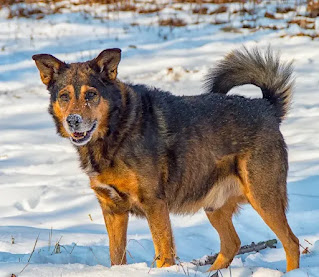Hybrid dogs are the result of breeding two
purebreds together. Some people think that hybrids are not as healthy or as
smart as purebreds, but this is not true. They can be very affectionate, loyal
and energetic companions who make great pets for families with children or
other animals in their household.
What is a dog breed?
A dog breed is a group of genetically similar
dogs that share a common ancestor and distinct physical characteristics. They
are categorized by size, coat type, temperament, and other characteristics.
Dogs were first domesticated about 10,000 years
ago in Eurasia and North America. Since then they've become an integral part of
human culture — from hunting to companionship — but their origins remain
somewhat mysterious because no one knows exactly how many breeds there are
today or when they first appeared on Earth.
Why do breeders
create hybrids?
If you're a dog owner, it's likely that one or
more of your pets has been born into a hybrid breed. While some people love
these unique animals, others feel they're an unnecessary step away from the
purebred dogs they love—and in some cases, even dangerous.
While there are many benefits to having hybrid
dogs (they're healthier than their purebred counterparts), there are also some
downsides. One major downside is that not all hybrid breeds have been tested
for health issues; this means that if your animal has any issues or illnesses
related to its genetics—such as hip dysplasia (a disease affecting the joints)
or eye problems like Progressive Retinal Atrophy (PRA)—you don't know until
after it develops serious symptoms!
Which breeds are
used to make designer dogs?
The most common designer dog breeds are mixes
of these purebreds:
- Labrador Retriever
- Golden Retriever
- German Shepherd
- Poodle * Cocker Spaniel * Beagle
Are mixed breed dogs
healthier than purebreds?
Hybrid dogs are healthier than purebreds
because of their lower genetic risk. They tend to be less prone to inherited
diseases, and they're more likely to live longer. This can be attributed to the
fact that hybrids don't necessarily have more serious health issues than
purebred dogs—the underlying causes of most health problems aren't necessarily
known in hybrids. It's also possible that hybrid dogs may have fewer genetic
problems because they don't share as many genes with each other as do
purebreds; sometimes two different breeds will produce offspring who differ
greatly from one another genetically (for example, if you breed a German
Shepherd with a Poodle). If these differences were significant enough, it could
mean that your dog would not share any characteristics at all with either parent
breed!
How much does it
cost to buy a hybrid dog?
How much does it cost to buy a hybrid dog?
The price depends on the breed. However, a
purebred dog can be anywhere from $100-$1,000 and an in-between breed can be
anywhere from $100-$1000. The designer dogs are often more expensive than those
with purebred parents because they do not have any genetic markers that you
would find in other breeds (e.g., Labrador Retrievers don't come from German
Shepherds).
How much exercise do
hybrid dogs need?
When you're deciding on a hybrid dog breed,
it's important to consider their exercise needs. Hybrid dogs are not suited for
apartment living or small homes. They need regular walks and playtime with
other dogs in order to maintain their health and happiness.
Hybrid dogs also need socialization with humans
and other animals so they can learn how to behave around us humans—and vice
versa!
How much grooming do
hybrid dogs need?
Hybrid dogs are prone to the same grooming
needs as any other type of dog. You should brush your hybrid's coat at least
once a week, or more often if it's thick and long. Make sure you're brushing
with a soft bristle brush that won't damage the coat or cause irritation on
sensitive skin. If your hybrid has an especially thick coat, you may need to
bathe him every two weeks instead of every three weeks—but don't forget about
bathing when he sheds! The average shedding cycle for most hybrids is once
every four months; however some can go longer than that because they have such
thick coats (and this is why we recommend brushing daily).
How big do designer
dog breeds get?
As with any breed, hybrid dog breeds can be as
small as a teacup or as large as the great dane. Most hybrid dogs are
mid-sized, but there are exceptions to this rule. In fact, some of the smaller
hybrids can be just as healthy and active as some of their larger counterparts.
Hybrid dogs tend to grow faster than purebreds
because they have more genetic diversity in their make-up than purebreds do;
however, it's important not to assume that all hybrids will grow into larger
sizes than what you're used to seeing from your current pet!
Hybrid dogs are
created by mixing different purebred dog breeds together. Some are called
designer dog breeds, but all of them can be adopted from a shelter or rescue.
Hybrid dogs are created by mixing different
purebred dog breeds together. Some are called designer dog breeds, but all of
them can be adopted from a shelter or rescue.
Hybrid dogs are not a new breed of dog—they're
just mixes of two purebreds that were bred separately in different countries
and then brought together to create a new one.
Conclusion
I hope this article has helped you understand
the hybrid dog breeds. I’ve included information on how they’re created and why
you might be interested in adopting one of these dogs. If you have any
questions, feel free to reach out!

Comments
Post a Comment